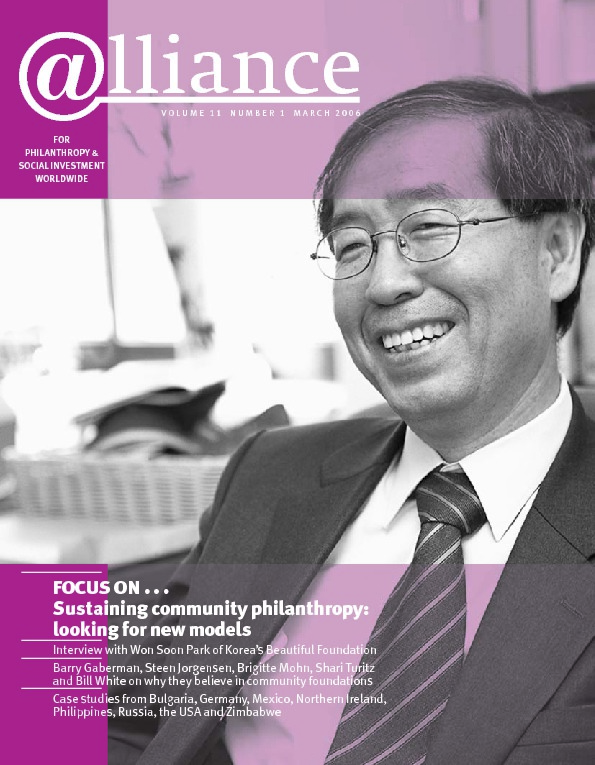A new publication of the Building Community Philanthropy project[1] in southern Africa confirms that poor communities have a wealth of knowledge about mobilizing resources and getting them to where they are most needed.
Backed by well-developed systems of self-help, reciprocity and mutuality, people survive and even advance under adverse conditions. However, for the most part this is overlooked. The poor are not considered philanthropists and indigenous philanthropy is not thought of as a development tool. This article points to a missed opportunity and offers a compelling proposition: could the future of effective and sustainable community philanthropy lie in a combination of the best of indigenous values and practices, and the knowledge and experience of organized philanthropy globally?
In southern Africa the organized philanthropy and social investment sector is poised for growth and change. A broad range of grantmakers, including community foundations, trusts, private foundations and corporate social investment programmes, are in play and the sector has begun to organize itself through peer networks to learn, advocate and build capacity. This is a good time not only to take stock of past experience and assess the present but also to forge a common vision of the future.
So can the impact of Philanthropy for Community (PfC) (vertical philanthropy – that is, the external resource transfer and support that is exemplified in development assistance and organized philanthropy) be increased by tapping into the community knowledge, values, leadership and systems of resource mobilization of Philanthropy of Community (PoC) (horizontal philanthropy – that is, the help impulse and behaviour within a community)?
In some respects the groundwork has already been laid within PoC. For example, widely understood yet unwritten norms and codes of conduct for resource mobilization already exist to guide decision-making, as well as the allocation of rewards or sanctions for helping or not helping. Underlying this ethic is the fact that people who are poor care a great deal about their reputation for reliability and what others think of them. How could this informal system of ‘governance’ positively influence a grantor-grantee relationship? Could the belief, which is central to the helping ethos of the poor, that ‘you must give, no matter how little, to be a human being among others’ inform new or existing vehicles of organized philanthropy?
What do we need to know?
A lot more needs to be known about the development potential of Philanthropy of Community and its relationship to Philanthropy for Community. First, we need to explore whether PoC is purely survivalist, as often assumed, ie it helps poor people cope with the very difficult circumstances of their lives, or whether it can be developmental, helping people to move out of adverse conditions. Second, we need to determine the effects of PfC and PoC on each other. Do external contributions support, distort or compete with what exists organically and does it matter?
If these issues are not better understood, one of two things is likely to occur. Either the sector will leave organic processes well alone for fear that the functions served by them will be undermined or destroyed, or foreign models will be imported and adapted with scant attention to their impact on indigenous philanthropic values and behaviour.
What do we need to do?
If community philanthropy is to combine the best of PfC and PoC, a lot needs to be done to bridge the gap between the two. For example, use of a less abstract and more accessible vocabulary could improve communication between communities and development workers. Assigning a value to philanthropic forms and content which are not just financial would require the sector to develop and work with indicators that measure intangibles – such as the level of sacrifice involved in a philanthropic act – as well as more traditional indicators based on money value alone. Adopting practices such as these could strengthen and foster more genuine and effective collaboration, decision-making and priority-setting among partners and also go some way towards ensuring that the value and meaning of the resources that each brings to the table are recognized and acknowledged.
1 The poor philanthropist: How and why the poor help each other, Building Community Philanthropy. See also Alliance Vol 10, Nos 2 and 3 (June and September 2005).
Susan Wilkinson-Maposa is Director, Building Community Philanthropy Project. She can be contacted at susanwil@gsb.uct.ac.za
For more information on BCP, visit http://www.gsb.uct.ac.za/gsbwebb/default.asp?intpagenr=428


Comments (0)